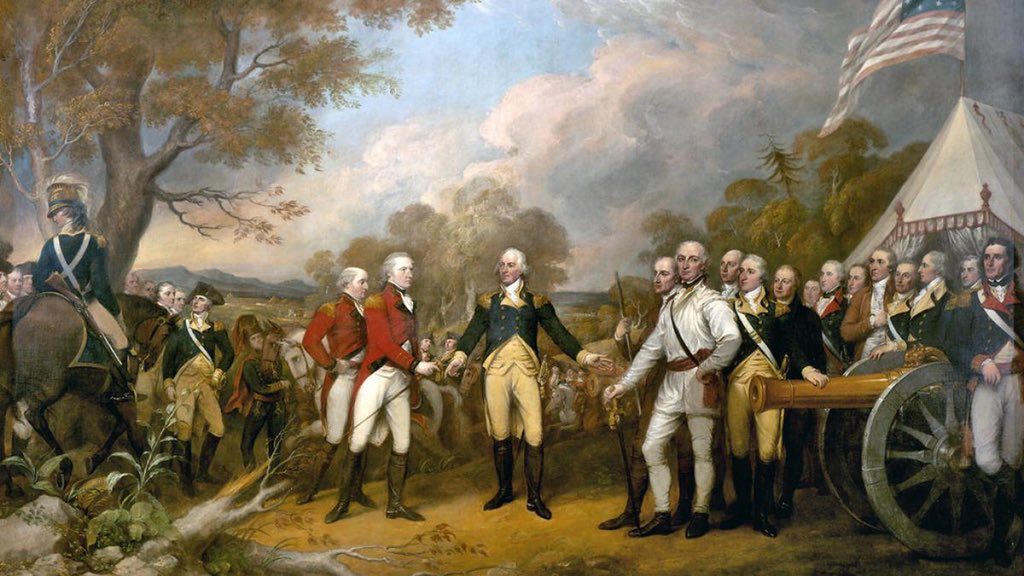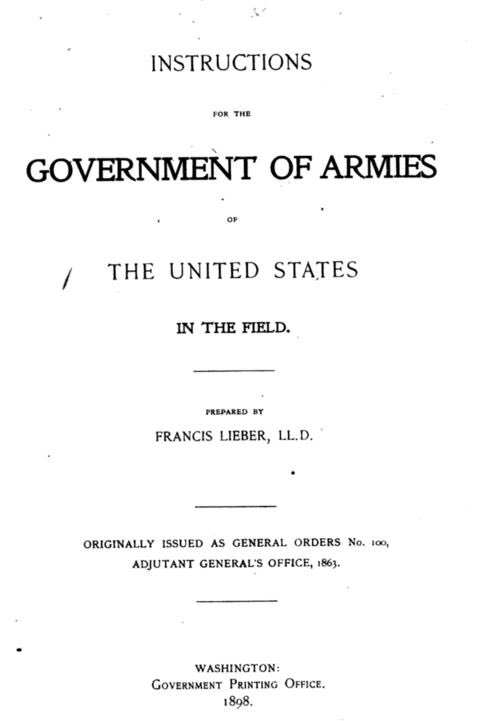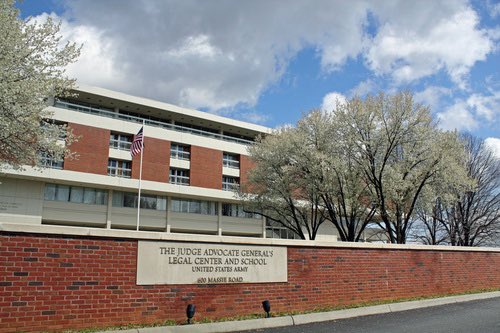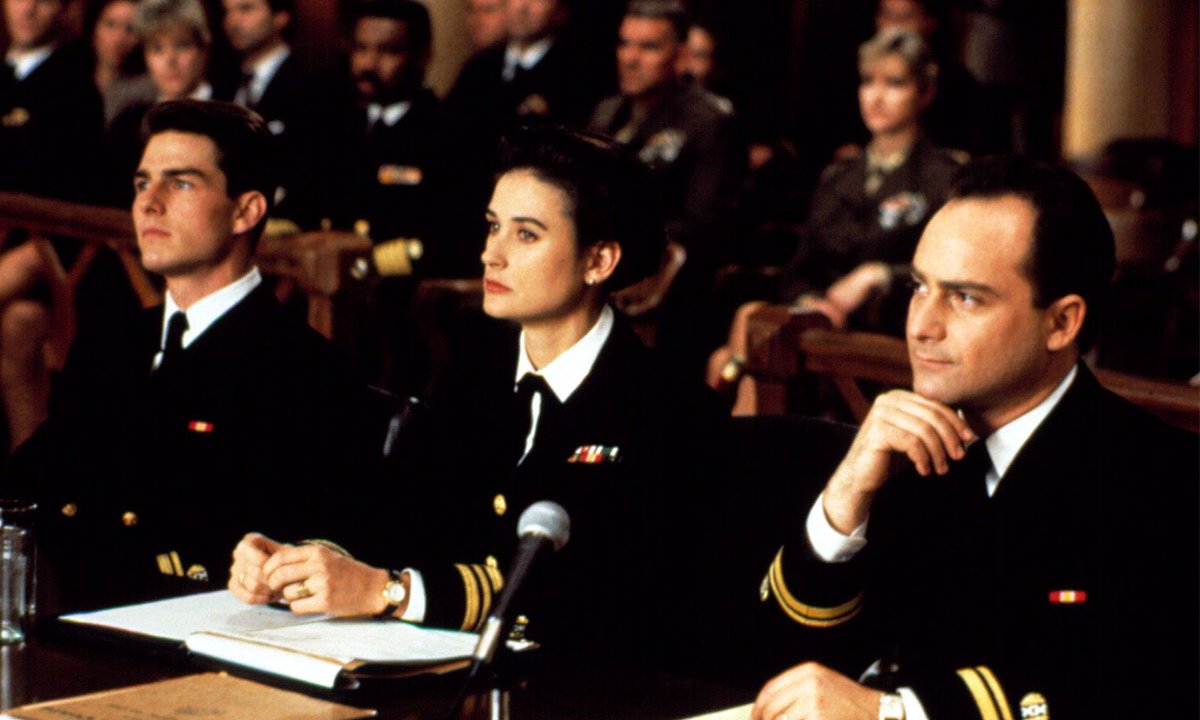The JAG Corps, or Judge Advocate General’s Corps, of the @USArmy provides legal services for the force. But the JAG Corps is not just all lawyers. 

While the JAG Officers do tend to be lawyers, there are also NCOs and other enlisted personnel serving as paralegals, as well as warrant officers and civilians. 



As with many of the other branches we’ve discussed so far, the JAG Corps began in 1775, when we formed our United States Army, and the first leader of the JAG Corps, The Judge Advocate General, was William Tudor.
(This guy)
(This guy)

The foundation of military law is the Uniform Code of Military Justice or UCMJ, which was established in accordance with US Constitution Article I Section 8: “Congress shall have power… to make rules for the government and regulation of the land and naval forces.” 

The UCMJ was initially set up in June of 1775 with 69 Articles of War used to govern the Continental Army. As with other legislation, UCMJ has changed a bit over the years, as the Army recognizes its own changing needs. 

Technically, the JAG Corps is the oldest existing law firm in the United States. Although it is still quite different from the typical non-military law firm.
Growing concern in the mid- to late-1800s with regard to international relations and international law was seen with the Lieber Code (1863) and also in US military participation in several conferences on the law of war at The Hague and in Geneva. 

And World War I brought us a “predecessor to the Soldiers’ and Sailors’ Civil Relief Act of 1940, which was to become the foundation for one of the major new missions of the [JAG] Corps – free legal counsel to the individual soldier about his personal affairs.” 

WWI would also demonstrate that “the 1916 revision of the Articles of War had not eliminated many of what were considered major faults in the military justice system. The Articles had not been drafted to govern an Army of 200,000 officers and nearly four million men.”
Sweeping reform to the military justice system was proposed in 1919 and the “hoped-for legislation was revolutionary” at the time.
(The pic is of Brigadier General Samuel Tilden Ansell, who pushed for these changes.)
Among the proposed changes were:
(The pic is of Brigadier General Samuel Tilden Ansell, who pushed for these changes.)
Among the proposed changes were:

“A number of punitive provisions of the Articles of War should be rewritten to delineate the elements of the crimes, to establish a maximum punishment for each offense, and to remove vague and ambiguous language;”
“The 1917 Manual requirement that the officer exercising summary court-martial jurisdiction over the accused make a preliminary investigation of the charges, and give the accused an opportunity to make a statement or present evidence, would become statutory law.”
Also, “among the crucial aspects of any court-martial were the personnel sitting on the court and the method of their selection. The Chamberlain bill would have required exactly eight members of a general court-martial and three for a special court-martial.”
“It also would have altered the commander’s power to select the court and to control it during the trial.”
There is a whole list and more detail in The Army Lawyer (link in the references at the end of the thread) but not all of these proposed changes were approved at the time. Change is a process.
The JAG School began during WWII out of a need to quickly train and prepare lawyers to serve as Judge Advocates in the rapidly expanding US Army. 



The modern JAG Corps plays a very significant role in the @USArmy – these Officers are “exposed to a broad spectrum of legal practice” and have opportunities early in their careers to make valuable contributions to the entire organization. 

TV shows and movies tend to focus on the courtroom excitement but in reality, JAG Officers do far more than just trials. 







JAG Officers, or Judge Advocates, typically “rotate legal disciplines every one to two years, and move to a different installation every two to three years” which is similar to the PCS schedule of many other Branches. 

Judge Advocates have a sort of double career in that they are both lawyers and Army Officers. They participate in physical fitness, leadership development, and other “Army stuff” while also building their legal experience. 



They benefit from collaborative efforts within the @USArmy – with others’ opinions and perspectives weighing in as needed. 

They also benefit from diverse experience as lawyers in the US Army, with immediate exposure to a wide range of legal practice areas including but not limited to international law, criminal law, legal assistance, civil litigation, and operational law. 







Operational Law is particularly interesting in the context of this series and with the modern LSCO focus. It “encompasses the law of war and all domestic, military, foreign, and international law affecting the conduct of military operations.” 







“Judge Advocates support humanitarian relief operations to full-scale combat. While deployed, Judge Advocates respond to legal questions about rules of engagement, targeting, intelligence law, and
detainee operations.”
detainee operations.”
“Judge Advocates support the commander’s military decision-making process and the conduct of operations with planning, advice, and analysis.” 



In essence, these Judge Advocates are involved in all parts of the @USArmy and they are essential to planning and decision-making processes. 

If you would like to read more about the Judge Advocate General’s Corps, the following may prove interesting:
The US Army Judge Advocate General’s Corps law.edu/_media/ocpd-pr…
The Army Lawyer: A History of the Judge Advocate General’s Corps, 1775-1975 loc.gov/rr/frd/Militar…
Training Army Judge Advocates to Advise Commanders as Operational Law Attorneys by LTC Richard P. DiMeglio loc.gov/rr/frd/Militar…
The 82nd Airborne’s “Jumping JAG”: The Incredible Wartime Career of Nicholas E. Allen by Fred L. Borch @82ndABNDiv @18airbornecorps loc.gov/rr/frd/Militar…
Uniform Code of Military Justice (1949) loc.gov/rr/frd/Militar…
Uniform Code of Military Justice (2019)
jsc.defense.gov/Portals/99/Doc…
jsc.defense.gov/Portals/99/Doc…
Soldiers’ and Sailors’ Civil Relief Act of 1940 govinfo.gov/content/pkg/PL…
Soldiers’ and Sailors’ Civil Relief Act of 1940 atgf.com/tools-publicat…
Soldiers’ and Sailors’ Civil Relief Act of 1940 ausa.org/publications/s…
Servicemembers Civil Relief Act (SCRA) myarmybenefits.us.army.mil/Benefit-Librar…
The Servicemembers Civil Relief Act (SCRA) justice.gov/servicemembers…
The “Lieber Code” – the First Modern Codification of the Laws of War blogs.loc.gov/law/2018/04/th…
Treaties, States Parties and Commentaries – Instructions for the Government of Armies of the United States in the Field (Lieber Code). 24 April 1863. ihl-databases.icrc.org/ihl/INTRO/110
General Orders No. 100: The Lieber Code avalon.law.yale.edu/19th_century/l…
Name, Rank, and Serial Number: The Legacy of the 1929 Geneva Convention
@WWIImuseum
nationalww2museum.org/war/articles/1…
@WWIImuseum
nationalww2museum.org/war/articles/1…
Department of Defense Law of War Manual (2015; updated Dec 2016)
dod.defense.gov/Portals/1/Docu…
dod.defense.gov/Portals/1/Docu…
Law of War Handbook (2005) loc.gov/rr/frd/Militar…
If you're just tuning in or you've missed any of the previous threads, you can find them all saved on this account under ⚡️Moments or with this direct link twitter.com/i/events/13642…
• • •
Missing some Tweet in this thread? You can try to
force a refresh
























